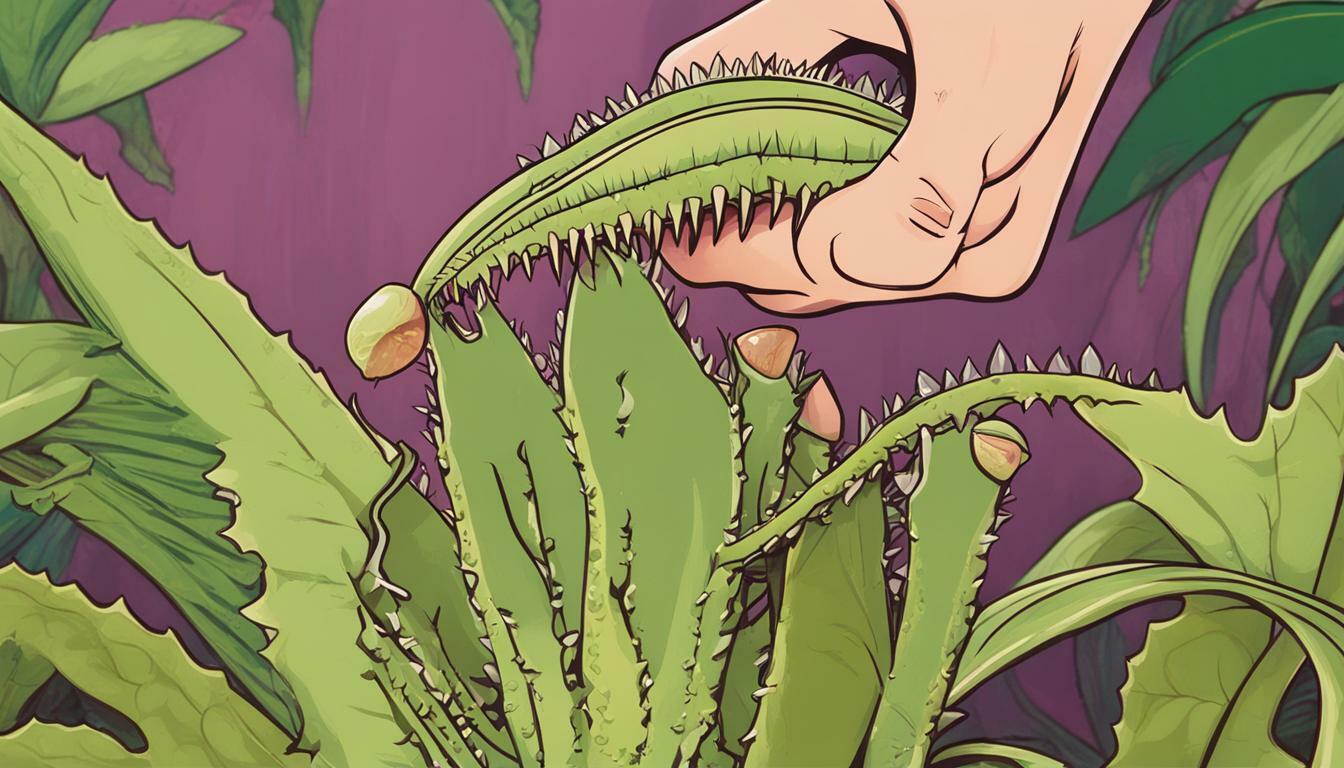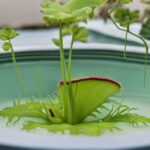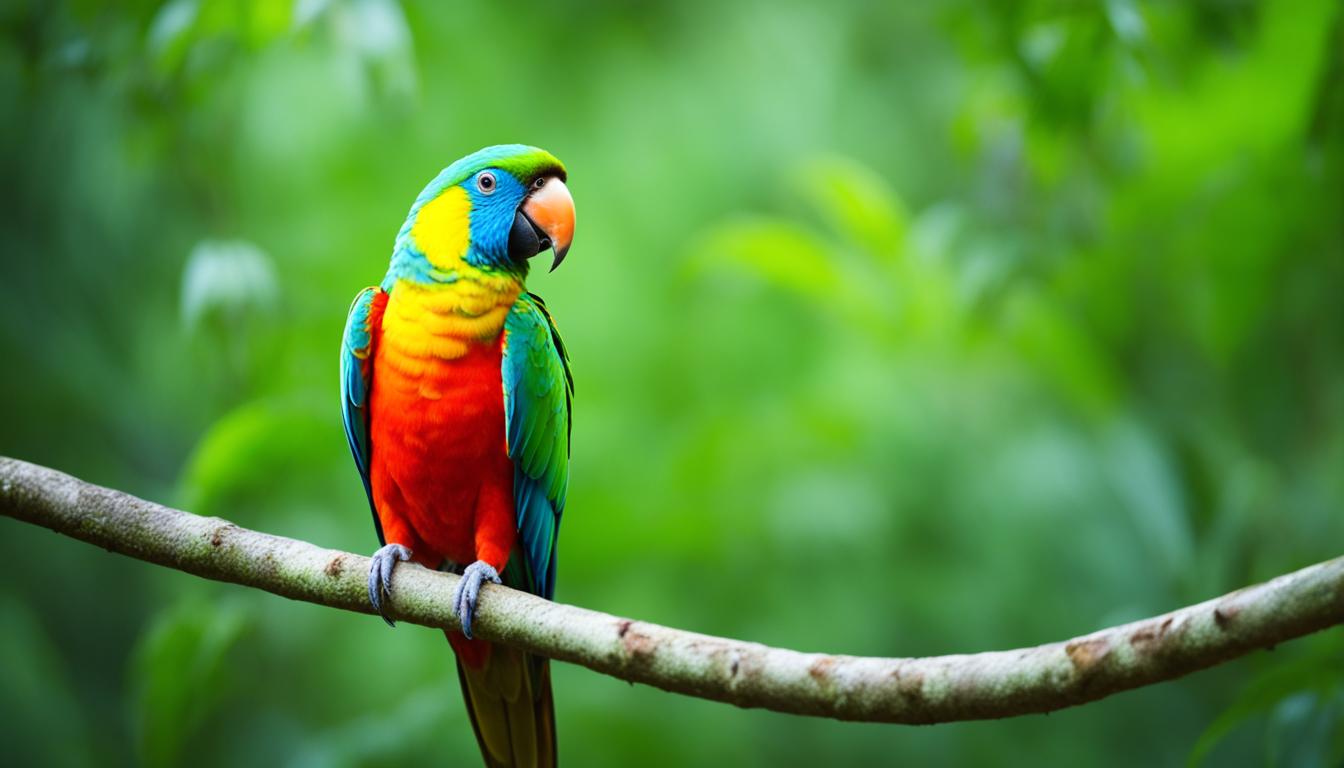Have you ever wondered what would happen if you put your finger in a Venus flytrap? While it may seem like an intriguing experiment, it’s important to understand the potential risks involved. Venus flytraps are unique carnivorous plants that have evolved to catch and digest insects. They are not designed to interact with human fingers or other objects.
In this section, we will explore the dangers of putting your finger in a Venus flytrap and the potential consequences that could result from such an action. We will also discuss the fascinating mechanisms of Venus flytraps and the essential care guidelines for keeping these plants healthy.
Key Takeaways:
- Venus flytraps are carnivorous plants that have evolved to catch and digest insects.
- Putting your finger in a Venus flytrap poses risks to both you and the plant.
- It’s important to understand the unique mechanisms of Venus flytraps and the essential care guidelines needed to maintain their well-being.
Understanding Venus Flytrap Mechanisms
Have you ever wondered how a plant can capture and digest insects? The Venus flytrap, or Dionaea muscipula, is a carnivorous plant native to subtropical wetlands on the East Coast of the United States. Unlike other plants, Venus flytraps have adapted unique mechanisms to capture and digest their prey.
The Venus flytrap plant consists of a modified leaf structure with two lobes that are hinged together. Each lobe has three sensitive trigger hairs on its inner surface. When an insect lands on the surface of the lobes and touches these hairs, it triggers an electrical signal that causes the lobes to snap shut, trapping the insect inside.
Once the insect is trapped, the Venus flytrap uses digestive enzymes to break it down for nutrients. The plant can take several days to digest its prey, after which it will re-open the lobes and release any remaining exoskeleton.
Did you know that Venus flytraps can only close their lobes a limited number of times? After about three to five closures, the plant will not be able to reopen its lobes and will die.
There are many interesting facts about Venus flytraps, including their ability to photosynthesize like other plants and their preference for live prey over dead insects. These unique mechanisms and adaptations make the Venus flytrap a fascinating plant to study and care for.
Risks Associated with Putting Your Finger in a Venus Flytrap
While Venus flytraps may seem intriguing, it’s important to be aware of the potential risks when interacting with them. The plant’s unique ability to trap and digest insects can also pose a danger to humans if you put your finger in a Venus flytrap.
The most obvious risk is getting your finger stuck in the trap. Venus flytraps have small, but powerful, leaves that can snap shut in less than a second. Trying to pull your finger out may only cause the leaves to tighten their grip, resulting in injury or even amputation in severe cases.
Additionally, Venus flytraps produce a small amount of digestive enzymes that can cause irritation or harm to your skin. Touching the leaves with your bare hands can cause itching, redness, and blisters, similar to a mild chemical burn. Ingestion of any part of the plant can also be toxic, causing stomach pain and vomiting.
It’s important to exercise caution and practice Venus flytrap safety when interacting with this unique plant. Avoid putting your finger in a Venus flytrap, and handle the plant with gloves or tweezers if necessary. As with any living organism, treat the plant with care and respect, and appreciate its beauty from a safe distance.
Caring for Venus Flytraps
While Venus flytraps are fascinating plants, they also require proper care to thrive. Here are some essential guidelines for keeping your Venus flytrap healthy:
- Provide ample sunlight: Venus flytraps require at least four hours of direct sunlight per day.
- Use distilled water: Venus flytraps are sensitive to minerals and chemicals found in tap water. Use distilled water or rainwater instead.
- Keep the soil moist: Venus flytraps need consistently damp soil to survive. Water them with distilled water or rainwater every 2-3 days, or as needed.
- Avoid fertilizers: Venus flytraps obtain all their nutrients from digesting insects. Do not fertilize them, as this can harm the plant.
- Do not feed them meat: While Venus flytraps are carnivorous, they should only eat insects. Feeding them meat can harm the plant.
- Winter dormancy: During the winter months, Venus flytraps enter a period of dormancy. Keep them in a cool location and reduce watering to every 2-3 weeks.
By following these guidelines, you can ensure that your Venus flytrap stays healthy and continues to thrive.
Conclusion
In conclusion, putting your finger in a Venus flytrap is not a good idea. The risks associated with this act are high, and it could lead to serious consequences. As we have discussed, Venus flytraps have a fascinating mechanism for catching and digesting prey, but they are not designed to harm humans.
If you want to enjoy the beauty of a Venus flytrap, you can do so safely by admiring it from a distance. These unique carnivorous plants require proper care, and with the right attention, they can thrive in your home or garden. Remember to keep your hands and fingers away from the plant to avoid any potential risks.
Thank you for reading this article. We hope it has provided useful information on the risks of putting your finger in a Venus flytrap and the importance of caring for these fascinating plants.
Can a Venus Flytrap Die If it Closes on a Human Finger?
The venus flytrap closing frequency & lifespan is primarily triggered by small insects. While it is unlikely for a human finger to cause harm, the flytrap may struggle to digest it due to its size. However, the trap itself won’t die from closing on a finger, as its ultimate demise is typically caused by various factors, such as age or lack of proper care.
Are Venus Flytraps Safe to Have Around Pets?
Venus Flytraps can pose a risk to pets, including cats and dogs. It’s important to keep them out of reach, as the plant’s carnivorous nature and snapping mechanism can lead to injuries. Ensure a safe environment for your pets by avoiding the presence of Venus Flytraps. For other smart home gadgets, consider exploring the lkbird smart bird feeder review to provide entertainment for your furry friends.
FAQ
Q: What happens if I put my finger in a Venus flytrap?
A: Putting your finger in a Venus flytrap is not recommended. The plant is designed to catch and digest insects, not human appendages. If you were to put your finger in a Venus flytrap, it could close tightly around your finger, potentially causing injury or trapping your finger.
Q: How do Venus flytraps work?
A: Venus flytraps have unique mechanisms that enable them to catch and digest prey. When an insect lands on the plant’s trigger hairs, it stimulates the closing of the trap. The trap snaps shut, trapping the insect inside. The plant then secretes enzymes to digest the trapped prey.
Q: What are the risks of putting my finger in a Venus flytrap?
A: There are several risks associated with putting your finger in a Venus flytrap. The plant’s ability to close tightly around objects can cause injury or trapping of your finger. Additionally, the plant’s digestive enzymes could potentially cause irritation or harm to your skin.
Q: How should I care for Venus flytraps?
A: Venus flytraps require specific care to thrive. They need a sunny location, moist soil, and distilled or rainwater for watering. It’s essential to avoid using tap water or fertilizers, as these can harm the plant. Regularly removing dead leaves and providing a humid environment can also promote healthy growth.











